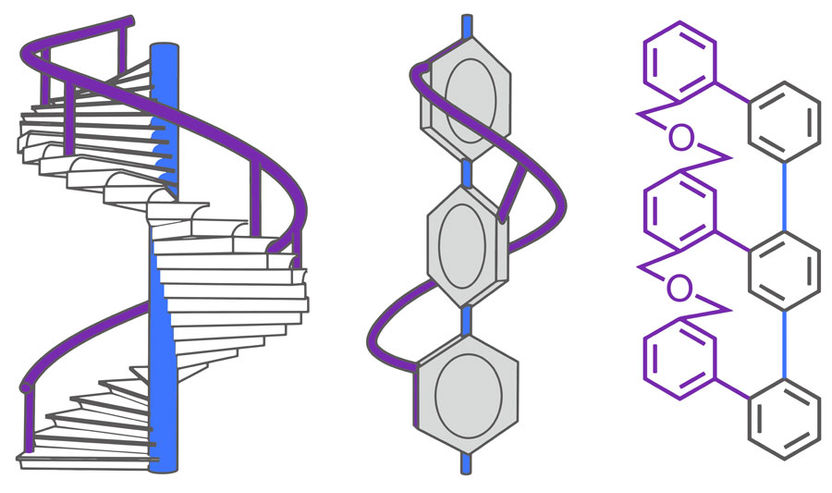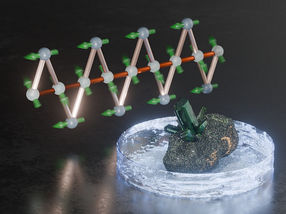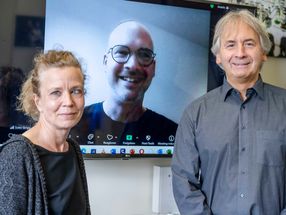A Twisted World – Chemists Build a Molecular Banister
Chemists at the University of Basel in Switzerland have succeeded in twisting a molecule by combining molecular strands of differing lengths. The longer strand winds around a central axis like a staircase banister, creating a helical structure that exhibits special physical properties. The results were published in the scientific journal Angewandte Chemie International Edition.

Based on the strands of different lengths (blue and gray), the new helical molecule (right) adopts a spatial arrangement (schematic diagram in the center) that resembles the banister of a spiral staircase (left).
University of Basel, Department of Chemistry
The chemistry of all substances is to a large extent defined by their spatial arrangement. Many molecules can be present in two forms (enantiomers), which behave like a person's right and left hand. In particular, the organism makes a highly specific distinction between left- and right-handed molecules – a substance can, for example, be extremely active as a drug in one form, while its mirror image is entirely inert. The fundamental understanding of this “chirality”, as it is called, has long been a central component of research in the field of chemistry.
Connecting strands of different sizes
The researchers headed by Professor Marcel Mayor in the Department of Chemistry at the University of Basel have developed a new approach to contort a small molecule into a form similar in appearance to the banister on a spiral staircase. At the molecular level, the interlinking of two oligomer strands with different lengths forces to the longer strand to wind around the shorter on its own to balance out the discrepancy in length. This creates a helix with a uniform twisting direction. As a consequence the entire molecule becomes chiral. The researchers were also able to demonstrate that it is possible to dynamically change the form of the helical molecule from left-handed to right and back again in just a few hours.
“It is not just the structural elegance of this molecule which makes it so unique,” says Mayor. “Above all, it is a completely new way of constructing a continuous helix.”
Efficient procedures for creating chiral compounds generate much interest in basic research and the industrial sector – they can, for example, be used in biological systems research, crop protection chemistry, and the pharmaceutical and fragrance industries. The project was financially supported by the Swiss National Science Foundation.
Original publication
Most read news
Other news from the department science

Get the chemical industry in your inbox
By submitting this form you agree that LUMITOS AG will send you the newsletter(s) selected above by email. Your data will not be passed on to third parties. Your data will be stored and processed in accordance with our data protection regulations. LUMITOS may contact you by email for the purpose of advertising or market and opinion surveys. You can revoke your consent at any time without giving reasons to LUMITOS AG, Ernst-Augustin-Str. 2, 12489 Berlin, Germany or by e-mail at revoke@lumitos.com with effect for the future. In addition, each email contains a link to unsubscribe from the corresponding newsletter.




























































